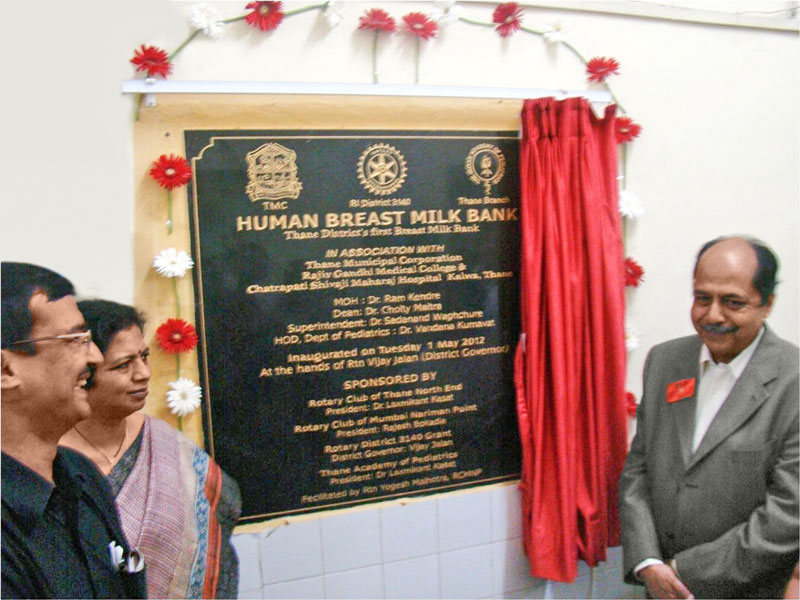
It is ten years now since the Rotary Breast Milk Bank was established in Thane. When it was set up in May 2012, it was the district’s first such facility and the 10th in the country, says Dr Laxmikant Kasat, a paediatric surgeon and founder of the milk bank. He was then the president of RC Thane North End (then RID 3140) and the Thane Academy of Paediatrics (TAP). The bank has collected 793.5 litres of human milk from 16,426 mother donors, and has distributed 716.9 litres of milk benefitting 2,704 infants over these 10 years until Mar 2022, he adds.
The facility, that cost ₹12 lakh in 2012, was set up with the support of TAP, RC Mumbai Nariman Point and a district grant which was sanctioned by the then DG Vijay Jalan. It was later refurbished in 2019 with the help of RC Mumbai Elegant and CSR funding from Axis Electrical Component.
Any healthy lactating mother with a healthy baby can become a donor. She should not be on harmful medication or radiotherapy; suffering from infectious diseases or behavioural disturbances; or be addicted to drugs, alcohol or tobacco, warns the paediatrician.
How does the unit work
Breast milk is collected from donor mothers manually or using breast pumps into pre-sterilised, leak-proof containers provided by the milk bank. The milk from various donors is collected in sterile steel containers, pasteurised and refrigerated immediately. Samples from each container are tested and the safe milk that had passed the tests is stored in a deep freezer. The containers are numbered and marked with the date of pasteurisation and other details.
Milk is distributed only upon receipt of order from a departmental head. Babies of non-lactating mothers; mothers with multiple births who cannot secrete adequate breast milk; abandoned and sick neonates; temporary interruption of breast feeding and babies whose mother died in the immediate postpartum period; low weight or premature babies and babies with deficiencies of sucking are given priority. Once discharged from the hospital, the relatives continue to get the milk daily from the bank till the stipulated six months after which the babies are usually weaned off breast milk.






